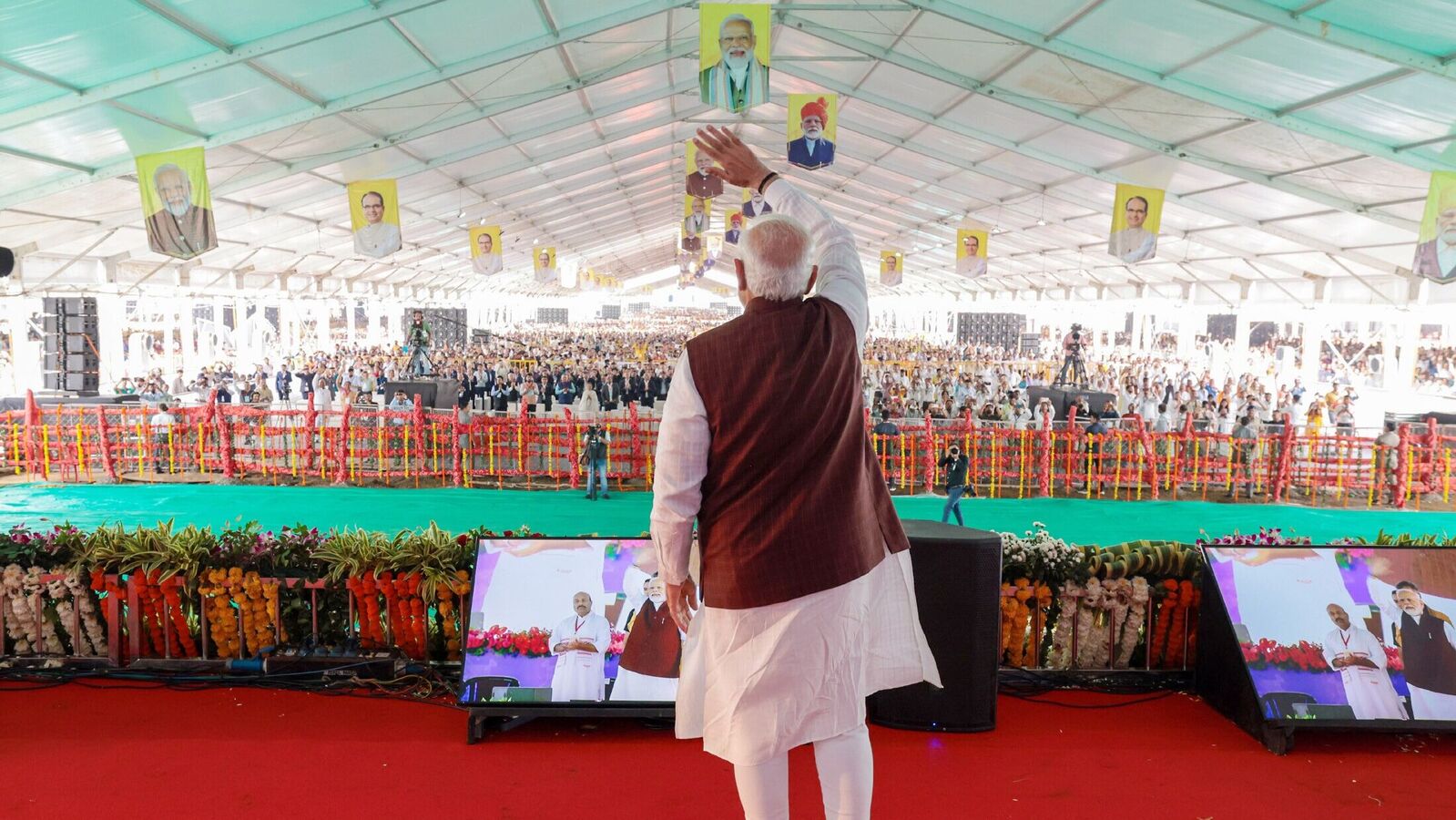Subsequently, the government stopped talking about the goal of doubling farm incomes, with no further updates provided. However, in February 2019, less than six months after the report’s submission, Modi launched the PM KISAN scheme in Gorakhpur, Uttar Pradesh, marking the initiation of direct cash transfers to farmer families’ bank accounts, amounting to ₹6,000 annually to over 856 million land-holding farmer families.
The committee had taken the average farmer’s annual income in fiscal year 2015-16 (FY16) as ₹96,703, a figure it arrived at by extrapolating the estimates of the FY13 National Sample Survey Office (NSSO). This included income accruing from farming as well as non-farm sources. The aim was to elevate this average to ₹192,694 at 2015-16 constant prices, or ₹271,378 at current prices, by FY23.
Covid struck two years after the final report was submitted. Despite farms being exempt from lockdown restrictions, the exact impact on farmer households remains unclear in the absence of official data.
Now, evidence is piling up for growing economic distress in rural India, home to nearly half of the country’s population, primarily engaged in agriculture. The government’s preliminary GDP estimates indicate that the agriculture sector will grow 1.8% in FY24, slower than 4% in FY23. The final GDP estimates will come with a lag.
Additionally, as per thinktank Icrier, rural wages have remained stagnant for a decade now. Worse, high inflation has eroded the purchasing power of wages in the last five years. When adjusted for inflation, growth in wages on farms and off them decelerated 3.0-3.3% per annum from FY15 to FY19. These wages shrank in real terms from FY20 to FY24.
This economic strain is expected to impact the consumption of everyday goods in rural areas, potentially affecting the broader non-rural economy. Mint has reported that market researcher NielsenIQ (NIQ) expects growth of fast moving consumer goods (FMCG) firms in 2024 to be 4.5-6.5% in value terms, sharply lower than 8.4% in 2022 and 9.3% in 2023.
NIQ follows a calendar year and has not shared its outlook on volumes growth. In the last two years, FMCG firms had raised prices to beat inflation in raw material costs, which gave a boost to their revenues. In recent quarters, though, companies have cut prices to sell more. For instance, Hindustan Unilever has reduced prices of soaps and laundry products.
The government’s GDP estimates also show that private final consumption expenditure, which accounts for 60% of GDP, will grow 4.4% in FY24, slower than FY23’s 7.5%.
People can’t spend money they don’t have. For consumption in rural India to pick up, wages and incomes will have to improve, if not double.
That calls for a review of the growth strategy being pursued. Welfare spending – largely on the MGNREGA wages that are too low to support spending or free wheat and rice for the poor – and capex spending on infrastructure from the budget cannot be expected to stimulate the rural economy.
Consumption spending power remaining sparse is also what’s holding private investments, which have remained tepid since 2012 even after the government’s budget push for capex spending through over the last four years. Businesses will not set up new factories unless they are sure consumption spending and wages will grow at a healthy rate.
Farmer incomes can grow a lot faster, if the food and farm economy is transitioned into market economy. The budget-constrained government cannot buy from farmers at remunerative prices. It can at best step in to pick up stocks for its free food schemes and in times of glut prevent a crash in market prices. It cannot substitute the market.
For remunerative incomes, farmers must produce for profits, following market signals; the government must stop distorting those signals with its typically short-sighted policies such as bans on exports and sales to private buyers, aimed at reducing its costs of procurement or depressing consumer prices for controlling inflation, especially when elections approach.
These changes need comprehensive agriculture reforms. The three farm laws passed by Parliament, and that were repealed in November 2021 under pressure from farmers’ protests, would have paved the way for many of the changes needed for farm incomes to see healthy growth.
The farm laws’ objectives weren’t what the fear-mongering and disinformation spread by the Opposition made them out to be. The problem was that the government had moved to have Parliament pass them without sufficient debate. Nor had government taken farmer groups into confidence about what the laws intended to do. They reacted badly, which put the government on the backfoot eventually. It still hasn’t recovered from that setback; its approach now is to let the states take up the reforms.
But Modi must forget the past, renew the farm laws by winning over farmers’ trust. Communication is his forte, which he must use to remove farmers’ unfounded suspicions. It’s the only way farm reforms will succeed. Especially as he alone enjoys unparalleled public trust, as was evident after demonetisation was announced.
#Modi #forget #revive #farm #reforms #repair #rural #economy



